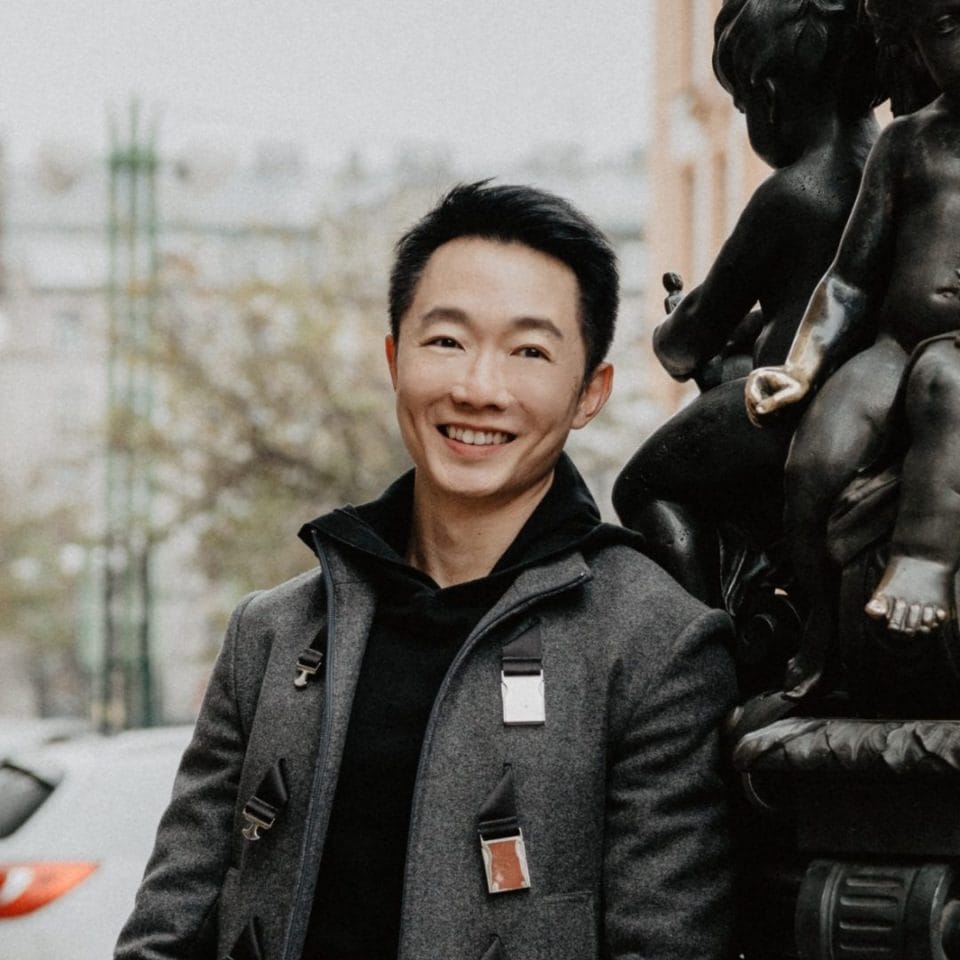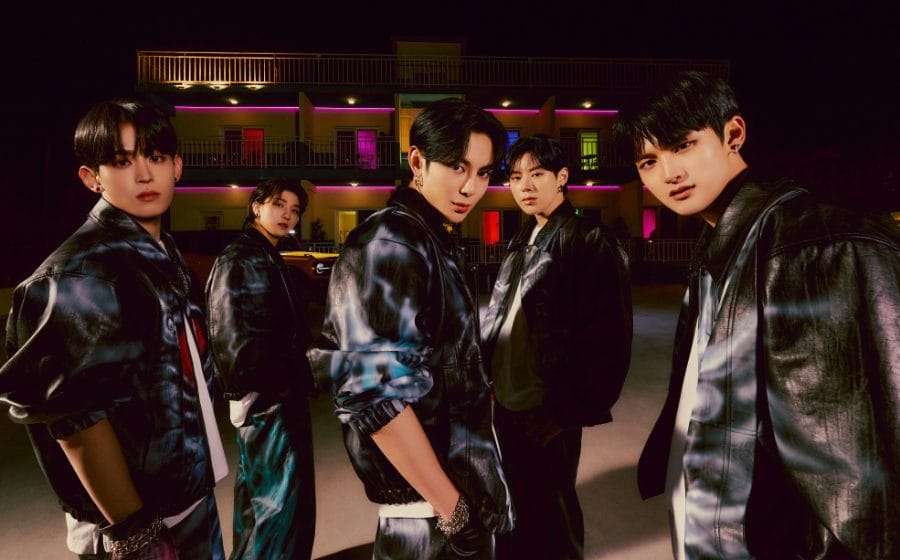
The thing about Smthgood is that it’s genuinely unlike any other shopping platform in the market. While others aspire to create a universe for its customers, Smthgood instead gives the power of creation to its customers: shop for conscious fashion, create a shoppable Lookbook (add stickers too!) while looking at others for inspiration, and if you’re game to participate in community events then enter weekly themed challenges to win coins to purchase stuff from the app itself.
Think about Smthgood this way: the joy of curating outfits ala Polyvore, seamless shopping experience from higher-end sites, and next, the community-driven fun from games like Bondee or Animal Crossing. Here, its founding director Tony K Tan takes us through the platform.
Hi Tony! Can you describe what Smthgood is in 10 or fewer words?
Profit-for-purpose-conscious fashion marketplace with a lookbook styling tool.
View this post on Instagram
With your interest in human behaviours that revolve around the psychology of purchasing behaviours, what was the most interesting insight you found? What about in a Singapore customer context then?
There are three key trends that I observed:
1. Buying behaviour is evolving away from a pure transaction experience to one that is more led by discovery, inspiration and personalisation. Consumers want to be engaged in a meaningful way. According to Bain and Meta SYNC 2022 and 2010 reports, close to 60% of consumers discover products through inspiration and influence before making a purchase.
Consumers are also experimenting with new or different shopping experiences.
2. There is increasing awareness of making better purchasing choices in favour of conscious/sustainable products as well as companies that stand for more than profit. According to the NYU Stern School of Business 2021 Sustainable Market Share Index, sustainability-marketed products (“SMP”) have grown 2.7x faster than conventionally marketed products.
While SMP is around 17% of the market, it accounts for 32% of the overall industry growth from 2015 to 2021.
3. Consumers are increasingly buying according to their values, i.e. more purpose-driven buying. According to the IBM Institute for Business Value 2022 report, Purpose Driven consumers (i.e. buying with their values) now leads at 44% of their survey responses, overtaking Price Driven Consumers (i.e. price conscious) at 37%.
In their 2020 survey, Value Driven Consumers led at 41% while Price Driven Consumers was at 40%.
In a Singapore customer context, I have noticed that the consumers of today are sharper in the consumption of fashion, trends and brands. It matters more than ever to consumers what their product is made of, how it is made, and its wider impact.
View this post on Instagram
With the way Smthgood operates — the combination of virtual styling with conscious fashion brands — it feels like you’re tapping into a niche crowd. How did you come up with the business idea and model?
I am sure self-reflection was a common occurrence for many of us during the pandemic. For me, it was a heightened realisation that we have a collective responsibility to do better. This triggered a revelation to revisit my pre-banking aspirations to combine social good with “for profit” endeavours.
In fact, pre-banking, I had wanted to do an MBA in social entrepreneurship. I am also generally very keen on understanding the macro trends and human psyche; how these trends shape changes in purchasing behaviours. Of course, I certainly have an acute interest in business as a whole, having been in banking for close to 20 years across corporate finance, global markets and wealth management.
The above, together with research and findings from a bespoke survey with 500 online savvy shoppers culminated in the current iteration of the Smthgood app, which in part has also enabled me to revisit my pre-banking aspirations relating to “profit-for-purpose” entrepreneurship.
The goal of Smthgood is to allow users to creatively discover products and trends that stand for conscious consumption. We want to facilitate a realisation that one can look good with conscious fashion, with the added benefits of doing good and therefore feeling good.
Overlaying such an objective is a different approach to driving sales, one that evolves away from a purely transactional user journey towards one that is discovery led, gamified and fun.
View this post on Instagram
What about the brands then? What does the term “conscious fashion” mean to you because not to be a downer, but brands often greenwash with the way they market themselves. Also, what piques your interest when approaching or being pitched by them?
When I started Smthgood, I was quite overwhelmed by the information overload revolving around conscious fashion. I certainly do not believe it should be overly complicated. So I took a step back and focused on the journey of a fashion item from the start to completion. We make it a point to talk to all our brands during the shortlisting phase and require our brands to embody one or more of our brand ethos that we value when curating our portfolio of conscious brands.
We consider:
1. What is an item made of, i.e. using eco-friendly and sustainability-focused materials, or using recycled and upcycled materials?
2. How is an item made, i.e. ethically and sustainably produced, hand-made or made to order?
3. What is its impact, i.e. community engagement and giveback, as well as empowerment?
Our brands are generally small to medium-sized and while they may not have the financial resources or time to go for certifications such as B Corp certification, they are no less enthusiastic in really wanting to make a difference and do something good for amongst others, the environment or the communities around them.
Thamon, one of our brands from Thailand, uses fallen leaves to make bags that look and feel like leather bags. Local brand Outfyt uses fishing nets from oceans, fabric scraps from mills and even carpets destined for landfills to manufacture their clothes.
We take pride in ensuring that we bring to our customer’s brands that share our ethos. Nonetheless, we agree that brands often greenwash the way they market themselves and acknowledge that we can’t be perfect in identifying the bad “actors”. As such, we have an open invitation to our users on our website to help us identify these bad “actors” that we erroneously onboarded due to irresponsible brand representations.
How smart does the fashion AI for Smthgood work and for a lack of a better word, how smart is it? Is it patented by the platform?
We work with a European firm to ensure smart tagging for the products on our platform. Accurate tagging allows for a more optimal search process for a user.
Currently, we are leveraging this smart tagging function to facilitate a more personalised user experience by showing products we hope are relevant to users via responses to a style quiz that they are invited to take upon downloading the app. We are looking to continuously refine this feature going forward.
I think that conscious fashion fosters a community like the one that hunts for vintage fashion; they talk to each other a lot on platforms like Reddit and Twitter. How does Smthgood encourage its sellers to mingle?
Many of our brands are small and medium-sized in scale and oftentimes, building up a brand by themselves can be lonely. We have organized casual lunch and coffee sessions so far in Singapore, Bali, Manila and Bangkok next. In addition, we also involve our brands in our social outreach.
We recently collaborated with IMODEA (a network of fashion and design faculties of 16 universities in Indonesia) on a panel discussion that focused on engaging the younger generation on conscious fashion. Panellists (which included Smthgood brands) shared their entrepreneurial journeys towards building conscious fashion brands. We also opened this panel up to the brands on our platform.
View this post on Instagram
With regards to how shipping or delivering products contributes to quite a huge part of the fashion carbon emission pie, how does Smthgood balance it? Perhaps, offsetting it with another program?
Smthgood is committed to purchasing 1,000 carbon credits annually, an equivalent of 47,619 trees being planted. The awareness of carbon credits is increasing, especially with Singapore positioning itself to be a core carbon credit exchange venue.
I believe that such an awareness can and should be broad-based. This is why we chose carbon credit offset as our core program to play our small part in increasing its awareness in this part of the world.
By doing so, Smthgood enables users to “feel good” – giving them the chance to be part of shaping a more environmentally friendly future for the fashion industry.
What’s next for Smthgood good in both a creative and commercial context? What do you wish to do perhaps, this year, the next five and the next 10?
As consumer buying behaviour continues to evolve and shift away from a purely transactional experience, we are focused on the opportunity to move towards designing a user experience that is led by purpose, discovery, inspiration, and personalisation. This keeps us optimistic about providing users with a unique and purposeful shopping experience, combining a gamified virtual styling tool and a conscious fashion marketplace aided by fashion AI.
We’re in an incredibly privileged position, to be able to celebrate and uplift a sizable number of small to medium-sized brands across the Asia Pacific focused on doing good.
Near term, the important objective is to progressively refine our product market fit, geographical focus and monetisation strategies based on the feedback of users and sellers, as well as referencing hard analytics, all while keeping in focus on “doing good”. We chose women’s fashion as the first vertical given the breadth and depth of the industry in terms of market size, as well as the “white space” to do better.
As we steady our foundation, we certainly look forward to exploring complementary verticals.
Lastly, a Men’s Folio traditional way to end an interview; what was the #1 most played song on your Spotify last year?
Cold Heart by Elton John and Dua Lipa. Love the mashup and the groove!
Once you’re done with this story, click here to catch up with our February 2023 issue!







